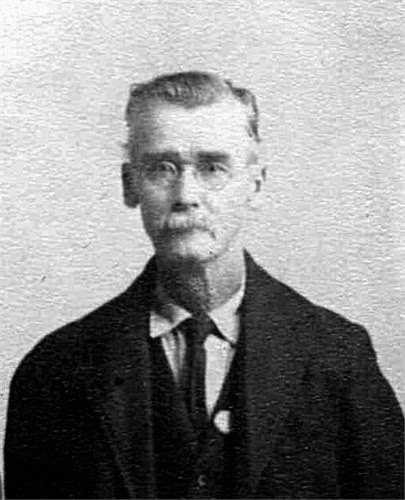Some of those who migrated West during the 1800s did it to find cheaper land or to take advantage of new opportunities in the myriad of boom towns that sprung up from Illinois to Dakotas and into Canada. Some did it for the adventure, rarely staying put in one place too long and waiting until they found the place to grow old.
Alexander Smith defined himself as an adventurer and spent much of his early life finding the next great thing. He was born 16 Jun 1845 in Steubenville, Ohio to James Smith and Susan Johnson, He was the last child born in Ohio before the family migrated to the Eastern Territory of Wisconsin in late 1845 or early 1846. He married Jessie Monteith, the daughter of Scottish pioneers Edward Monteith and Agnes McCubbin on Christmas Day, 1866, in Grant County, Wisconsin.
Grant County was a mining area. Cornish miners worked the mines and towns sprung up around them. Land was available and fertile, so it also became a flourishing farming region. Many of my relatives used Grant County as a launching point for further migration over the course of the next few decades in search of inexpensive farm land.
Alexander and Jessie moved to Spring Creek, Harlan, Nebraska and homesteaded. Harlan County was established in 1870 and settlers began coming to the area which had plenty of fresh water and a valley of arable and tillable land soon thereafter. The length of their stay there can't be clearly deduced since no 1870 census is available for them, but in 1880 they were farming there and by 1890, they were in the Duluth, Minnesota area. Their daughters, Minnie (1890) and Mabel (1895) were born in the Duluth area. The Smith's,ready to move on, contemplated moving on to their next chapter up north.
Kindersley, Saskatchewan was settled in 1910, and named after Sir Robert Kindersley, who was a major shareholder in the Canadian Northern Railway. Settlement in Kindersley began when the first homesteader arrived from Saskatoon by Ox Cart, in 1905.
Kindersley, Saskatchewan was settled in 1910, and named after Sir Robert Kindersley, who was a major shareholder in the Canadian Northern Railway. Settlement in Kindersley began when the first homesteader arrived from Saskatoon by Ox Cart, in 1905.
In 1911, Alexander and Jessie and the Anderson's emigrated to Kindersley, not far from Medicine Hat, probably lured by the railroad completion through the untouched prairie land up for settlement and the advertising created to lure new settlers. Canada had defined a new settlement policy that mirrored a young America's policy, granting 160 acres of free land to any man over 18 (or head of family woman). Advertising downplayed the need for agriculture experience and portrayed the area as an idyllic land of plenty.
The platting of the land put the homesteads quite far apart, leading to isolation. For those early settlers, who often lived in sod houses, the reality was forbidding and far from the recruiting ad promises of a veritable Utopia. Minnie married Melvin Gustav Anderson in 1913 in Saskatchewan. They homesteaded in an old soddie early in their marriage.
It's not clear just how long the Anderson's stuck it out in this difficult life, but by 1920, they, along with Minnie's parents, were living in Brook Park in Pine County, Minnesota. Minnie's Uncle James "Doc" Smith, who had also moved north, settled in Moose Jaw, where he remained for the rest of his life.
Perhaps life in Canada broke the Smith's of their need for adventure, because they resided in Brook Park until they died. Alexander died in 1925 and Jessie in 1939, their gravestones marked with, "Pioneers - Adventurers - Philanthropists."
Melvin spent his remaining years farming and then working as an administrator in soil conservation and Minnie raised their five children. Melvin died in 1960 and Minnie followed him in 1966. Minnie's sister Mabel moved back to Saskatchewan, by then far less forbidding, after marrying her second husband and remained there until her death in 1979.
 |
| Minnie and Melvin Anderson at their soddie outside of Kindersley, about 1914 |
It's not clear just how long the Anderson's stuck it out in this difficult life, but by 1920, they, along with Minnie's parents, were living in Brook Park in Pine County, Minnesota. Minnie's Uncle James "Doc" Smith, who had also moved north, settled in Moose Jaw, where he remained for the rest of his life.
 |
| James "Doc" Smith Remained in Canada |
Melvin spent his remaining years farming and then working as an administrator in soil conservation and Minnie raised their five children. Melvin died in 1960 and Minnie followed him in 1966. Minnie's sister Mabel moved back to Saskatchewan, by then far less forbidding, after marrying her second husband and remained there until her death in 1979.

No comments:
Post a Comment